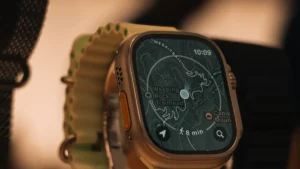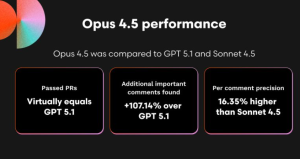In the art world, there is a figure akin to a “wizard” whose works create a fantastical world, magnificent and charming with an underlying sense of surprise. Since the 1990s, he has been collaborating with celebrities and creating cross-disciplinary works, capturing the hearts of the art world – today, we take you into the artistic world of Marcel Dzama.

Usually, the protagonist appears at night. They are dressed in theatrical costumes, extremely evil and beautiful, with a lazy expression. Subsequently, ghostly creatures begin to gather, including cats, cranes, butterflies, and fish. It is midnight, with the moon hanging high behind them, the sky gilded, the tide surging darkly around them, and vegetation spreading.
“If an artist can be called both a storyteller and a time-space traveler, it must be Marcel Dzama.” Writer Kate Lawson once wrote.
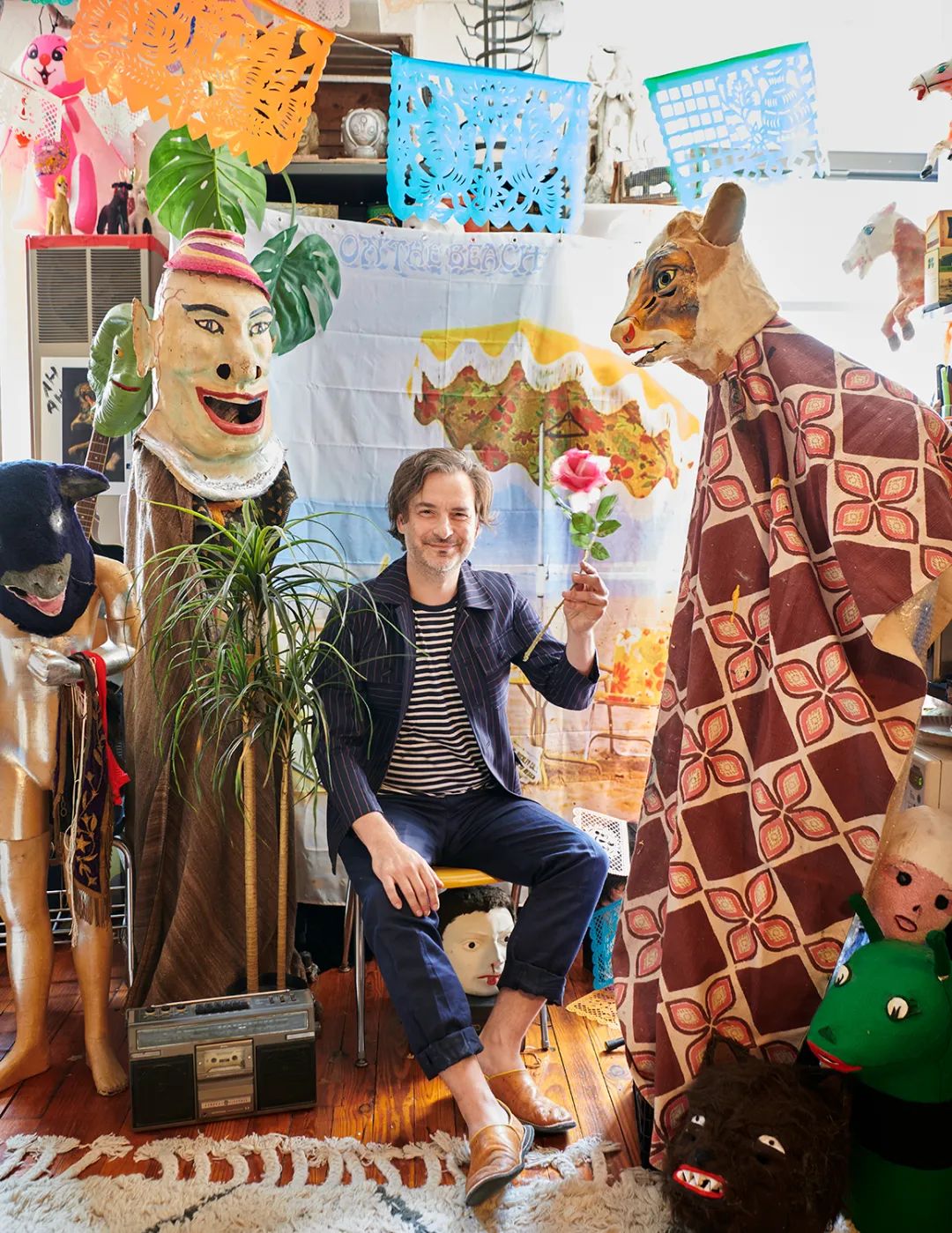
“Who Loves the Sun” Exhibition, David Zwirner Gallery, New York, 2021 © Marcel Dzama. Image courtesy of the artist and David Zwirner.
In Dzama's paper works, narratives wander through folklore, the ocean, the tropics, and celestial bodies, with fairy tales, fantasy, and the subconscious interwoven and growing. His core originates from the classics, with the medieval strange and dangerous paths from Dante's “Divine Comedy,” and the epic tale of gods and Satan from John Milton's “Paradise Lost”; his works are a surrealistic appearance, like a carnival of otherworldly revelry that might happen in legends.
01 Fantasy world
Marcel Dzama, “A Musical Portrait of Federico Garcia Lorca,” pearlescent acrylic ink, watercolor, and graphite on paper, 2022 © Marcel Dzama. Image courtesy of the artist and David Zwirner.
In 2020, Dzama officially introduced tropical landscapes into his paper works, with travels to Morocco and Mexico providing nourishment for the artist. As lockdowns ensued and the outside world became increasingly monotonous, his works became more mysterious, distant, and vibrant in color.
Dzama's exhibition “Child of Midnight” at David Zwirner gallery showcases the creations from this phase. “The exhibition tends towards a gorgeous escape from reality,” writer Dorian Lynskey commented in The Guardian. “Escape” is only an appearance; one can indeed find respite in the visual feast, but in the excessively beautiful landscapes, you might also sense a certain unease.
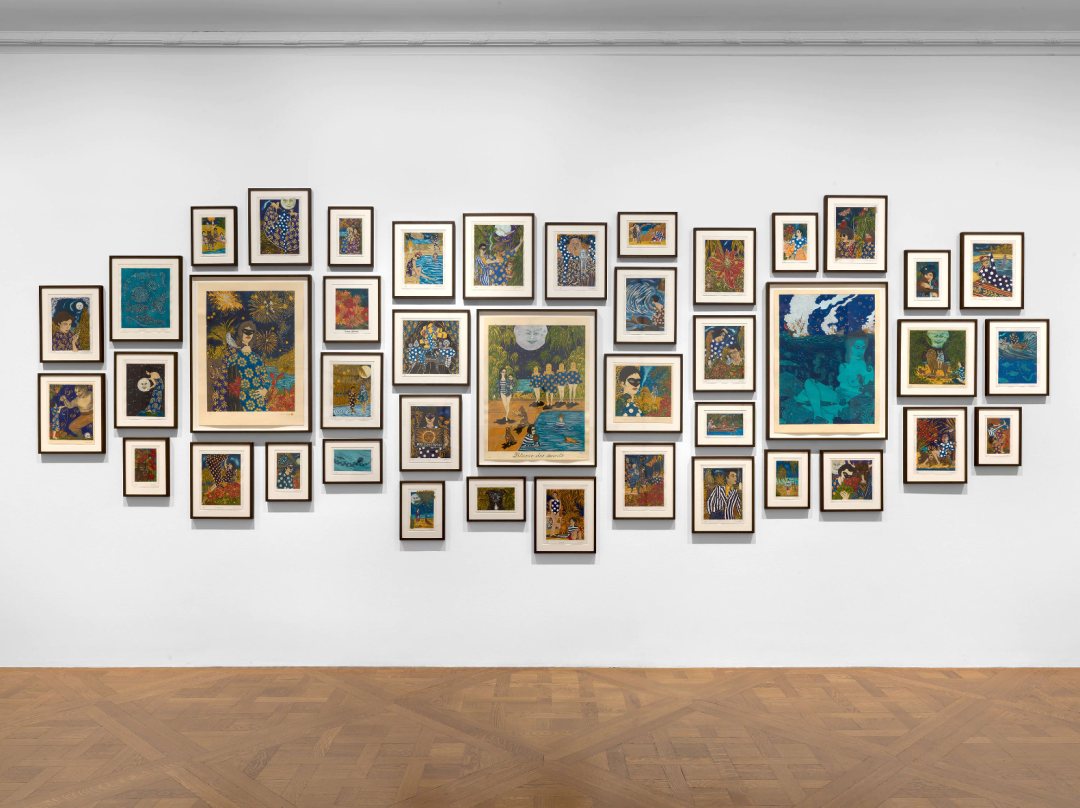
Marcel Dzama's “Midnight's Children,” pearlescent acrylic ink, watercolor, and graphite on paper, 2022 © Marcel Dzama. Image courtesy of the artist and David Zwirner Gallery.
The water flows rapidly, animals are alienated, and the moon is grinning. “(These works) are themed around the apocalyptic revelations of climate change. Our ‘Doomsday Clock' is ticking down,” Dzama explains. And in connection with his earlier works, the artist's paintings never lack discussion of social issues, some introspection, some profound meaning, hidden under the guise of humor and absurdity – just like Dadaism a hundred years ago.

Marcel Dzama, “Out on the banks of the Red River,” ink and watercolor on paper, each part: 35.9 x 27.9 cm; overall: 35.9 x 83.8 cm, 2008 © Marcel Dzama Image courtesy of the artist and David Zwirner

Marcel Dzama's “The Carnaval Blues,” watercolor, gouache, and graphite on paper, 46×66.4×2.5cm, 2014 © Marcel Dzama. Image courtesy of the artist and David Zwirner Gallery.
Marcel Dzama's charm has long been widely recognized – this is the 25th year of the David Zwirner Gallery representing the artist. Since gaining attention in the late 1990s, the artist's works have been collected by many celebrities, such as actors Nicolas Cage, Brad Pitt, and Jim Carrey; his works have also been included in the permanent collections of many museums, including top institutions such as MoMA, the Guggenheim, and the Tate Gallery.
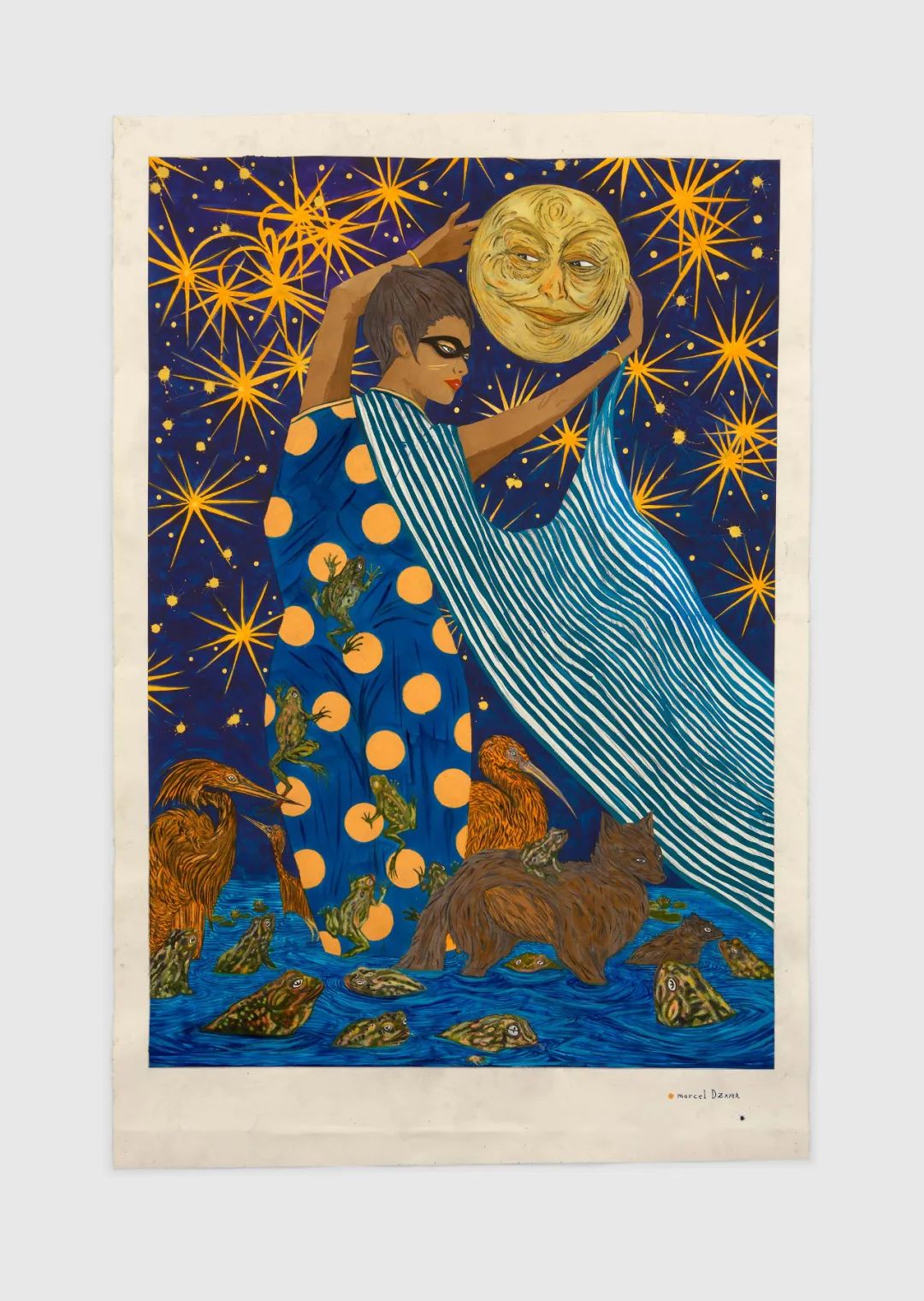
Marcel Dzama, “Untitled,” collage on paper with colored pencils, 30.2×22.9cm, 2008 © Marcel Dzama. Image courtesy of the artist and David Zwirner Gallery.
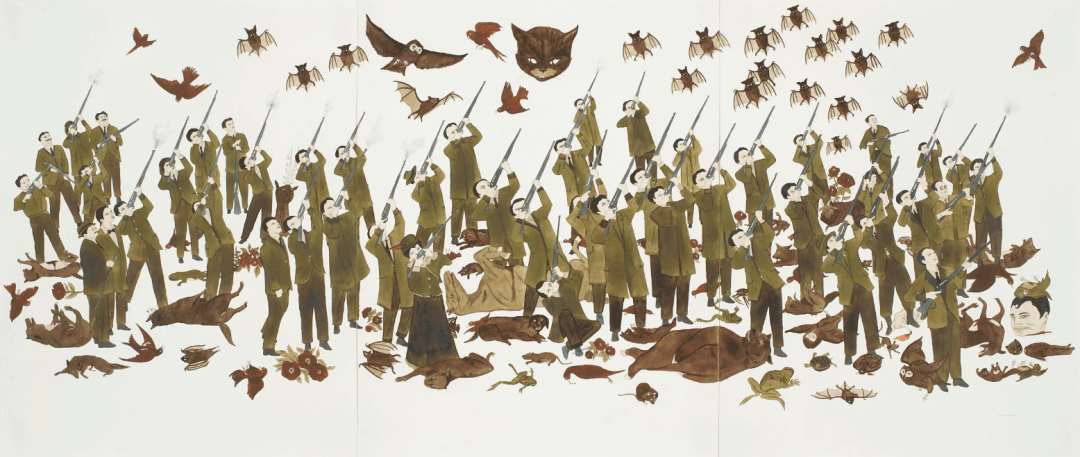
Marcel Dzama was born in Winnipeg, Canada in 1974. “The long winters and isolation made me a more skilled artist because I spent all my time on art,” he said. During his studies at the University of Manitoba, he founded the Royal Art Lodge, an art group. In this university and city far from the art center, Dzama and his members were actively developing small-scale practices. However, a fire awakened him from the long winter nights: before graduation, a fire broke out in his home, and almost all of his works were destroyed.

Marcel Dzama's “Farewell my love” (2023) © Marcel Dzama. Image courtesy of the artist and David Zwirner Gallery, to be exhibited at JINGART.
“Like a phoenix, it allows a person from the past to be renewed.” Dzama and his family were placed in a temporary hotel. His creation was reset, and he began to remake his graduation portfolio. Now, we can only see the artist's creation after the disaster, but there are traces of the ghostly prosperous history of his hometown, the pet rabbit that died in the fire, and a certain cold atmosphere. “The snow-covered grassland had a certain influence on my early works without a background, the horizon of the snowscape is blank.”

Marcel Dzama, “A Paradise Lost,” 2022 © Marcel Dzama. Image courtesy of the artist and David Zwirner Gallery, to be exhibited at JINGART.
02 Rise from the ashes
Marcel Dzama's “Mother of Night” (2023) © Marcel Dzama. Image courtesy of the artist and David Zwirner Gallery, to be exhibited at JINGART.
The artist's personal style began to take shape at this time, and to some extent, the fire indeed brought Dzama the “luck” of rebirth from the ashes. After graduation, his new works attracted the attention of curators; at the age of 23, Dzama had his first exhibition; the following year, he was discovered by David Zwirner at the exhibition and became a member of the gallery.

Marcel Dzama, “The 1919 Revolution,” pencil and ink on paper, 2009 © Marcel Dzama. Image courtesy of the artist and David Zwirner Gallery.
During his time at school, another “small thing” also propelled Dzama's creation: he saw Duchamp's (Marcel Duchamp) last work, “Etant donnés,” in a book he happened to pick up in the library, and became obsessed with this art master. A few years later, seeing the original work in Philadelphia was called by him “a life-changing experience.” As he said, “Duchamp's work made me think more on an intellectual level, made me think of Picabia. His ever-changing style inspired me to move away from my comfort zone.”
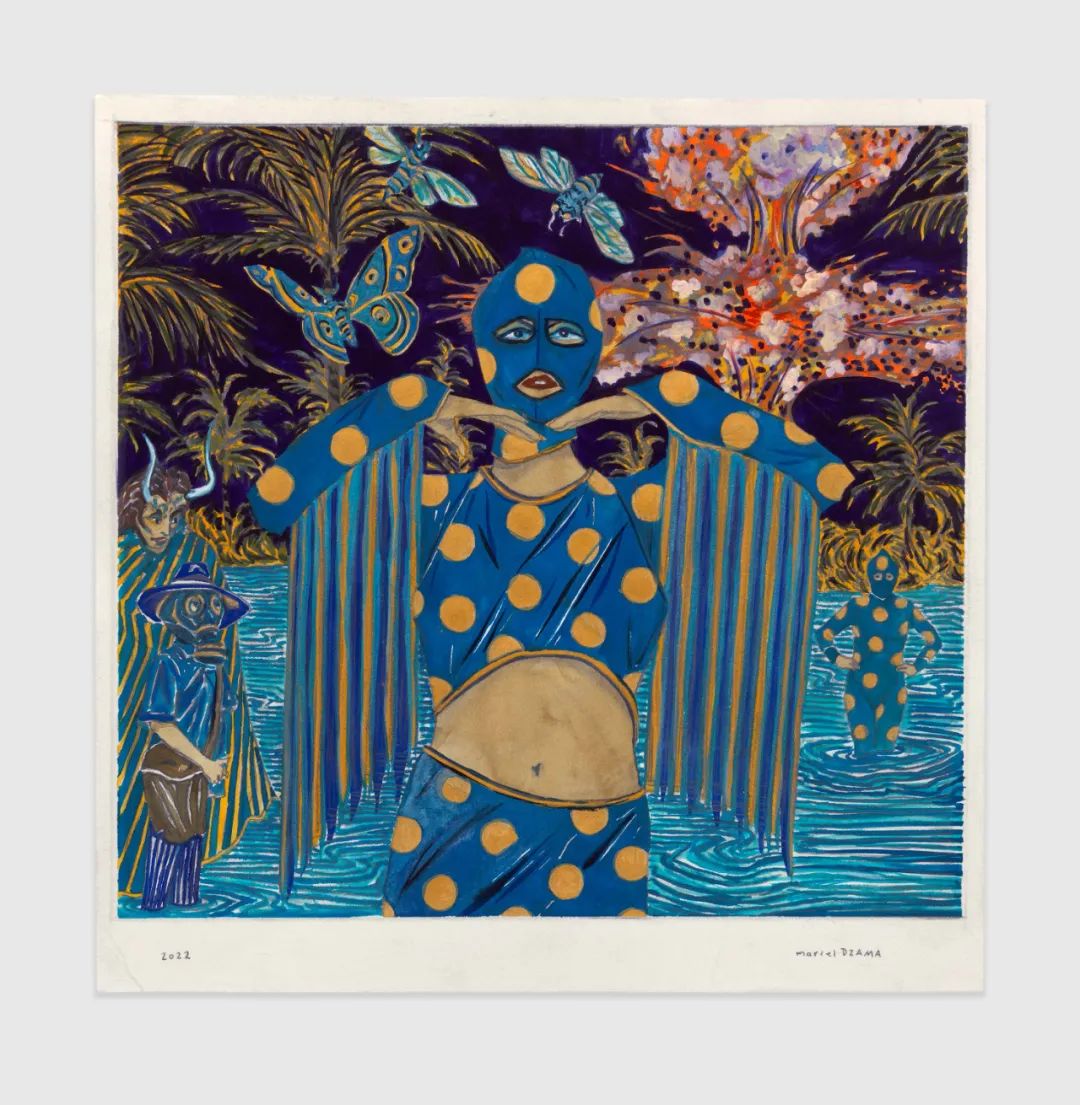
Artist Marcel Zamaan © Marcel Zamaan, image courtesy of the artist and David Zwirner Gallery.

Marcel Zamax's “A red box for Marcel” is a mixed media artwork that includes fabric, acrylic, wood, plaster, metal, paper, photographs, polaroids, vinyl, records, collage, and strings. The dimensions of the artwork vary depending on the installation, with the assembled dimensions being 76.2 x 147.3 x 83.8 cm, the box dimensions being 13 x 50.2 x 45.1 cm, and the dimensions when opened being 68.6 x 147 x 76.2 cm. The artwork was created in 2013.
Duchamp and his work are also naturally incorporated into Zamax's films. In “Une danse des bouffons” (A Dance of Clowns), Zamax reconstructs Duchamp's love affair with Maria Martins, and the film is a summary of various styles: black and white color, surrealism, Dadaism, and a wealth of art history materials. For example, the scene of “Etant donnés” is reproduced, the image of the dancing Minotaur originates from Francis Picabia's painting “Adoration of the Calf”, and the inverted chair can be traced back to Joseph Beuys's sculpture made of felt, wooden walking sticks, and animal specimens…
Indeed, painting is only a part of Marcel Zamax's art. He is active on a broader art stage.
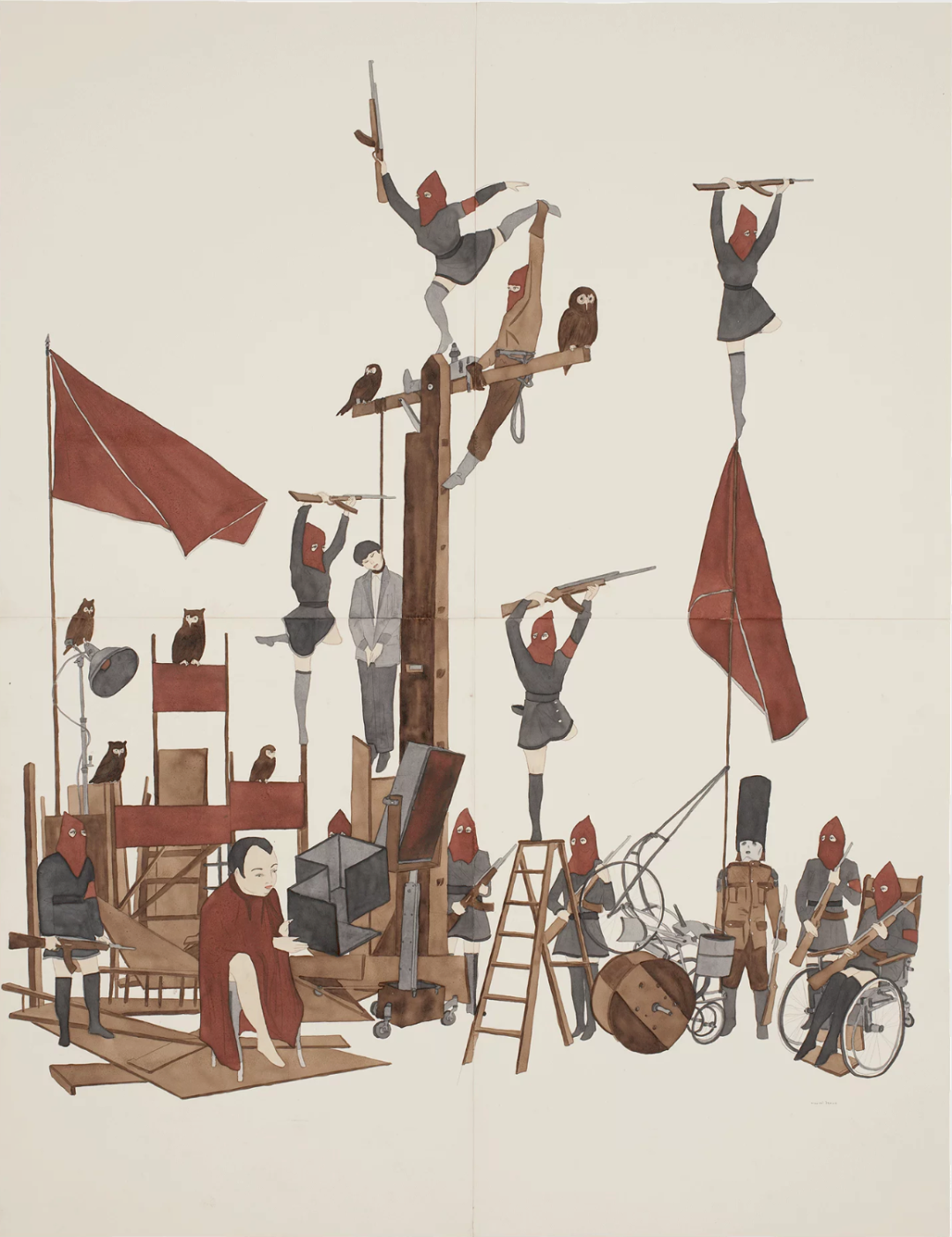
Marcel Dzama's “Harlequin's Dance,” black and white sound video, 35 minutes and 22 seconds, 2013.

In 2014, the exhibition “Puppets, Pawns, and Prophets” was held at David Zwirner Gallery's London space, featuring three chess-inspired video works (influenced by Duchamp), as well as a series of collages, three-dimensional models, and sculptures based on character creation. The hard mask sculptures, depicting terrorists and surveillance monitors placed in the gallery, permeate the exhibition with metaphors of war violence.

Marcel Zalma, “Turning into Puppets (Volviendose Marionetas)”, steel, wood, aluminum, and motor, 165.1 x 198.1 cm, 2011, © Marcel Zalma, Image courtesy of the artist and David Zwirner Gallery.

Marcel Dzama's “The One Who Laughs,” printed plate and spray paint, 52.1×27.9×27.9cm, 2014 © Marcel Dzama, image provided by the artist and David Zwirner Gallery.
In addition to sculptures and video works, drama is also one of Dzama's focuses. In 2016, the artist also created a full series of costumes and sets for the New York City Ballet's production of “The Most Incredible Thing.” “Some costumes I had to paint directly onto the dancers, almost as if I was painting the dancers,” Dzama recalls.
As a result, the character images in his works step out of the paper, cleverly combining with Andersen's fairy tales, coupled with his references to the Bauhaus style, the stage play presents a dreamlike dark and uneasy atmosphere.
03 More than painting
Marcel Dzama, “The flowers have horns and the devil has thorns,” ink, watercolor, graphite, and collage on paper, 2014 © Marcel Dzama. Image courtesy of the artist and David Zwirner Gallery.
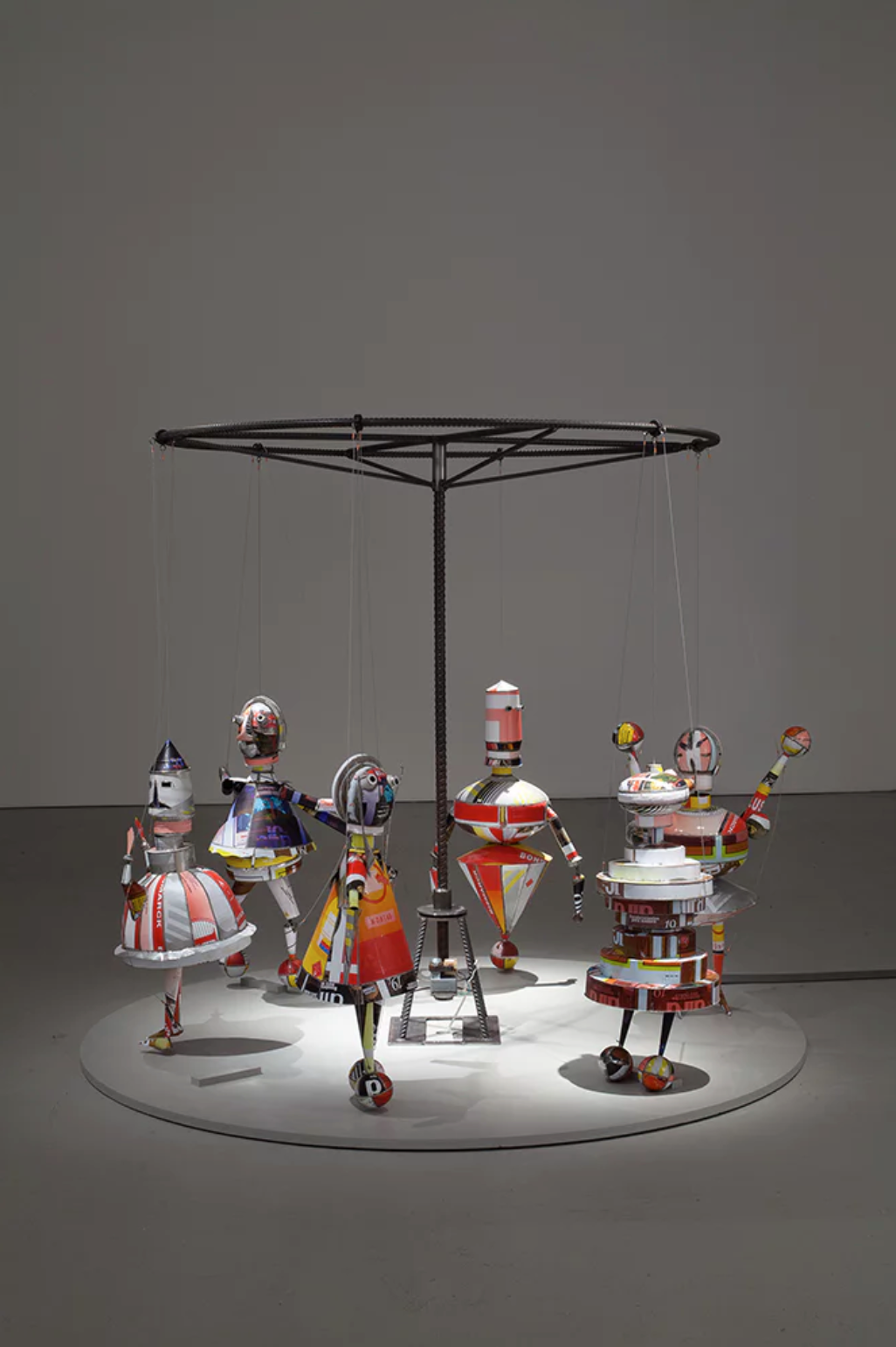
Marcel Dzama, “A Night at the Movies,” ink, gouache, graphite, and collage on paper, 2012 © Marcel Dzama. Image courtesy of the artist and David Zwirner.
Counting its “cooperation list,” Dzama's figure is all over the art world – designing album covers for the American band Beck, producing movies with director Spike Jonze, inviting musician Kim Gordon to perform in his works, and singers Bob Dylan, writers Maurice Sendak, and artists Raymond Pettibon are all his partners.
Especially Pettibon, who is also represented by the gallery, whose paintings widely pick up cultural elements and often integrate images with text. The two have drawn together many times, and their works often cleverly combine two styles. “Neither of us is good at socializing, so we often draw together on napkins.” The gallery exhibitions “Let Us Compare Mythologies,” “Forgetting the Hand,” and “Extended Play” are presentations of the artists' collaborative drawings. For Dzama, Pettibon “opened the door for him to accept painting as the main form of art.”
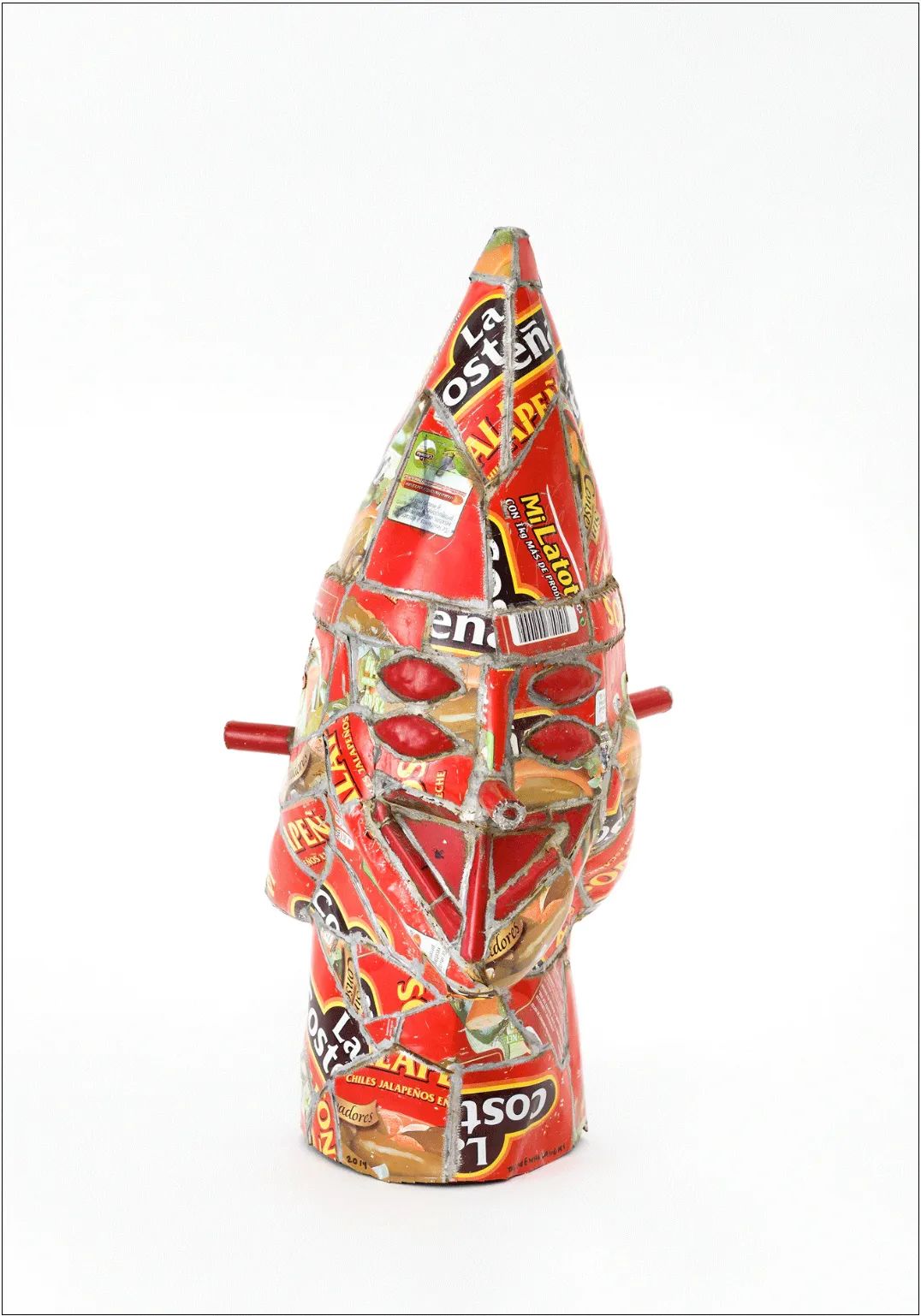
Exhibition “Forget the Hand” at David Zwirner Gallery, New York, 2016 © Marcel Dzama and © Marcel Dzama with Raymond Pettibon. Image courtesy of the artist and David Zwirner Gallery.
A few years ago, his son Willem was born. Becoming a father brought significant changes to his life and creation. “Since his birth, I have become another person. I used to be more negative, gloomy, and cynical.” Some “small fortunes” entered his art through his son's eyes, “he discovered things I didn't notice: such as a stray cat and a beautiful mosaic window.” Especially during the trip to Morocco, perhaps those bright colors and images could occupy the paper, and it was precisely because of Willem's existence that they were born.
It is not difficult to understand why Marcel Dzama has been moving forward in the art world since college. Thanks to the unique charm and inclusiveness of his art – whether it is life, travel, social events, or art history, all are included in his works. And there, evil and beauty grow together, with the scale not favoring either side. In this way, surrealism or Dadaism is just its appearance. In fact, it conveys a kind of complexity that belongs to reality and is true. This complexity provides a continuous energy supply to Dzama until it is poured again on the bizarre paper.


